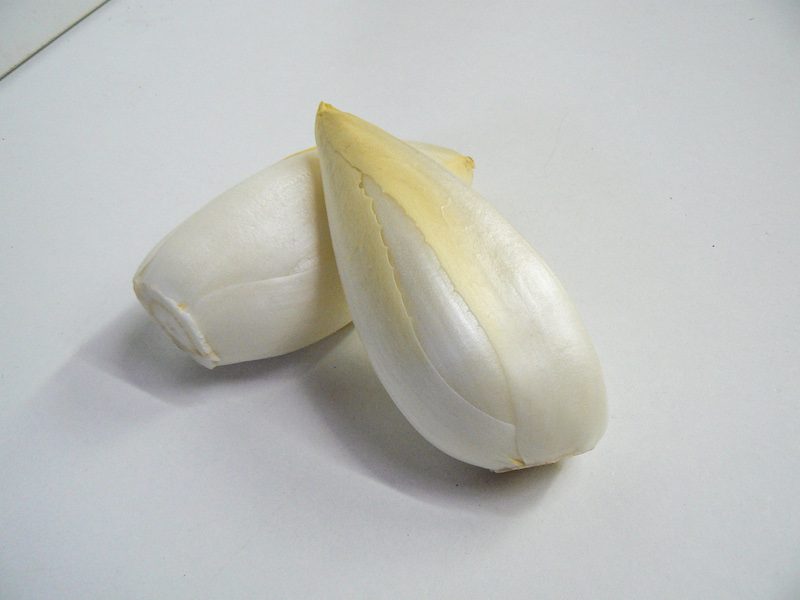Subscribe: Apple Podcasts | Spotify | RSS | More
This editorially independent podcast has been supported by VISITFLANDERS as part of the “Food Group” series of stories. Read more.
In English, it’s known as “Belgian endive”, sometimes also referred to as “Chicory”. It translates into French as “Chicon”. But it’s best known in its native Flemish Brabant as “Witloof”: literally “White Leaf”.
It’s a unique vegetable in its appearance, a torpedo head of tightly packed white leaves which have a slightly bitter taste and offer various culinary opportunities. Unlike most other vegetables, however, it has to be grown twice, once to extract the root from the seed, and the second time to “force” the root under cover of complete darkness to develop its distinctive pointed cigar shape.
Witloof heads are versatile in cuisine. When raw, they are crisp and bitter, making them a great addition to salads. Their long cupped leaves are often used as small serving platters for cheese and nuts, sprinkled with herbs and drizzled with vinaigrette. They provide the bitter backbone to sweeter salads containing plums, apple, and lemon-honey dressings. Very commonly, they are served with mayonnaise in accompaniment to steak.
When cooked, the sharper flavours of witloof soften into a mellow, nutty sweetness, most often seen in dishes such as braised witloof, or rolled in ham and covered in a creamy sauce with gratin dauphinois – that’s a dish called hesperollekes. It’s also incredibly nutritious. Witloof is low in calories and sodium, and rich in vitamins, minerals, and fibre.
Belgians are proud of their witloof, perhaps because it mirrors the qualities of their national character: from the soil, as the Belgians keep their feet on the ground; difficult to grow as the Belgians are stubborn; and unlike any other vegetable as the Belgians are unique.
The vegetable appears in dishes, not just in fancy restaurants, but in village corner brasseries and family homes. There’s a witloof festival in the Belgian town of Haren, with exhibits on farms, the serving of dishes, and a “Chicon Run”. Between 1954 and 1977, there was an annual Miss Witloof competition in Belgium. There’s a beer company located in Brussels called Brasserie Witloof. Brouwerij Hof ten Dormaal use the root of the vegetable to enhance bitterness in one of their beers, a Belgian ale of 8% ABV called Witgoud, or “White Gold”. There’s even a Witloof museum in Kampenhout.
Even though it’s iconic in Belgium, often nicknamed “White Gold”, the very existence of witloof is under serious threat. In 1975, it was the most grown vegetable in Belgium, making up a quarter of all vegetables grown in the country. Now it makes up just 2%. In 1975, there were 4,822 farm holdings in Belgium producing witloof. Now there are less than 250.
There’s loads of parallels with beer here, and losing traditions forever. Many farmers, scientists, and traders believe that in as little as 20 years, witloof will not exist at all. How can that be so? Is that real? How can a vegetable that the Belgians love just disappear? And what are people doing to fight for its survival?
Sit back, listen, and enjoy the story of Belgium’s most iconic vegetable.



